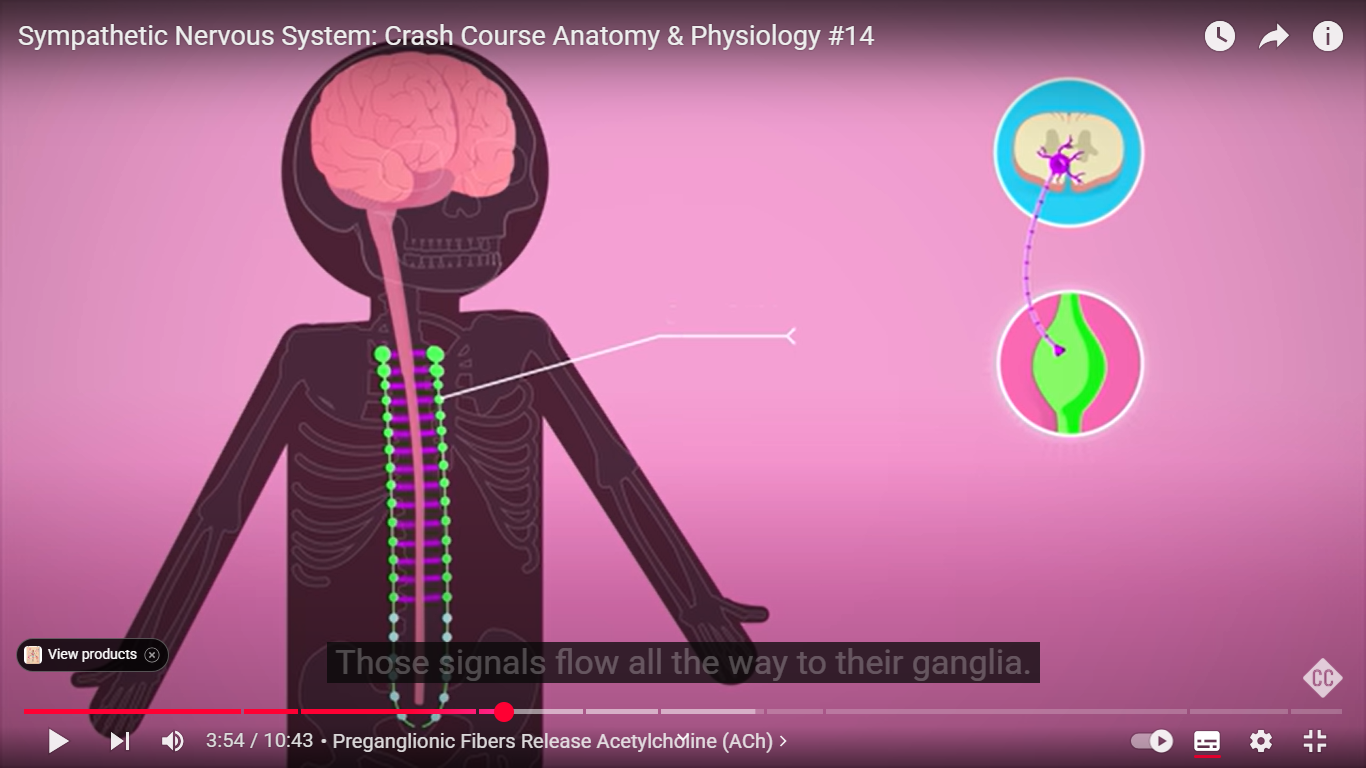Sympathetic Nervous System
1/22
There's no tags or description
Looks like no tags are added yet.
Name | Mastery | Learn | Test | Matching | Spaced |
|---|
No study sessions yet.
23 Terms
Part of Nervous System that responds to stress
Sympathetic Nervous System
The sympathetic nervous system uses this type of messenger that neurons use to communicate with each other or their effector organ across a synapse, usually made and released from neurons themselves
neurotransmitters
The sympathetic nervous system uses this type of messenger that are secreted by your glands
hormones
T or F: the very same substance can have different effects, sometimes totally opposite effect depending on where it’s received in your body
T

if a stressful thing occurs, your brain sends action potential down your spinal cord and, _______ . Those signals flow all the way to their ganglia
Preganglionic Neuronal Axons
If the action potential reaches the ganglia, neurons inside will release a neurotransmitter called ______
Acetylcholine +
This neurotransmitter crosses the synapse from ganglia, to postganglionic axon and if there’s enough, it can stimulate action potential on several axons on the other end, the post ganglionic fibers
Acetylcholine =
The postganglionic fibers who received the Acetylcholine will carry the action potential to the ______ that can be organs, muscles, blood vessels, or glands
effector
This neurotransmitter is ALWAYS RELEASED FROM POSTGANGLIONIC FIBERS in the SYMPATHETIC NERVOUS SYSTEM
Norepinephrine +
Preganglionic Neurons of both Sympathetic Nervous System and Parasympathetic Nervous system release this neurotransmitter
Acetylcholine -
Postganglionic Neurons of Sympathetic Nervous System release this neurotransmitter
Norepinephrine =
Postganglionic Neurons of Parasympathetic Nervous System release this neurotransmitter
Ach
This gland is directly innervated by a preganglion neuron from Sympathetic Nervous System that releases norepinephrine and epinephrine once activated
Adrenal Gland
T or F: Norepinephrine released from a neuron is a neurotransmitter, while Norepinephrine released from a gland is a hormone
T
T or F: we describe neurotrnasmitters and hormone differently because they’re functioning differently
T
T or F: Norepinephrine works by stimulating and inhibiting the same systems at the same time (e.g norepinephrine released from adrenal medulla causes more blood flow to muscles whilst restricting blood flow to intestines at the same time)
T
T or F: Same chemicals can cause opposite reaction depending on the particular kind of receptor that an effector has for receiving that chemical
T
Norepinephrine has blood vessels as an effector, and this effector contain a receptor for norepinephrine or epinephrine called ______
Alpha Receptor +
When norepinephrine or epinephrine bind to this receptor in blood vessel, both chemicals make it contract, thereby restricting blood flow
Alpha Receptor =
On smooth muscle cells that control other blood vessels, there are a lot of these _____ that when bound by norepinephrine or epinephrine, they dilate and make a muscle relax.
Beta Receptors +
Alpha or Beta: Particularly in smooth muscles around your blood vessels that feed your skeletal muscles to increase blood flow and oxygen to muscles of arms and legs and helps to relax it
Beta
Alpha or Beta: Blood vessels leading to stomach and intestine that reduce blood flow to it by CONSTRICTING IT
Alpha
______ of Sympathetic Nervous System can lead to problems such as high blood pressure, digestive problems, and suppression of immune system
overdrive